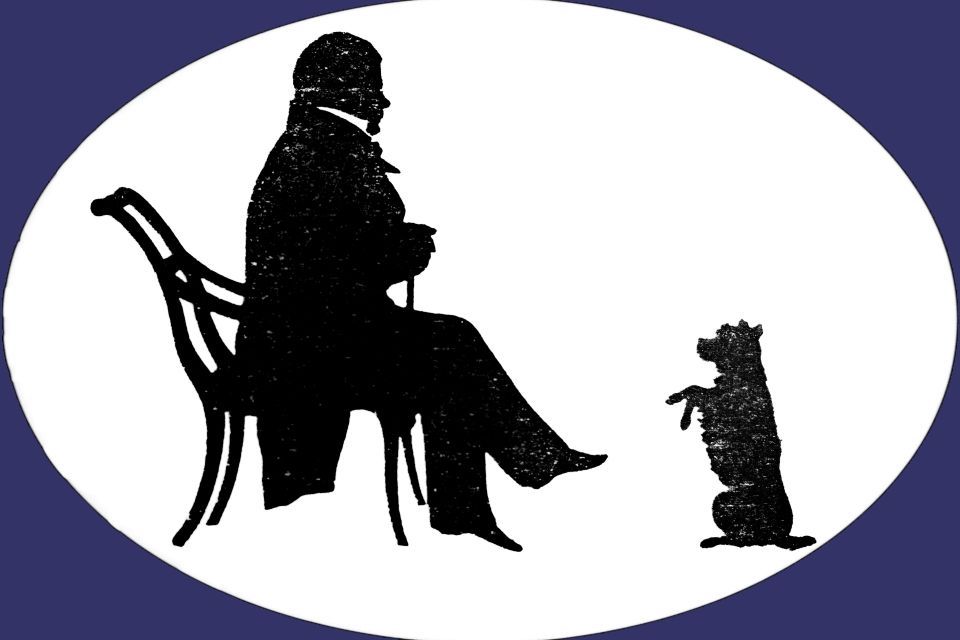Building a New Past, Bequeathing a Future: Walter Scott and the Baronial
Thursday 18th November 2021
Summary of the Talk:
Professor MacKechnie explored Walter Scott’s crucial role in shaping the architectural style known as the Scotch Baronial, with Abbotsford as the central case study. Rather than retelling the well-known story of Abbotsford, MacKechnie examined the cultural and political ideas behind its creation and legacy.
Scott’s engagement with romanticism, nationalism, and architecture was part of a broader 19th-century movement to create national identity through aesthetics. His architectural choices expressed both his love of Scotland's past and his commitment to British Unionism.
Key Themes and Points:
1. Romanticism and Identity:
- Romanticism challenged classical ideals by focusing on emotion, asymmetry, and national heritage.
- Scott’s work, including Abbotsford, was part of a pan-European romantic movement, particularly aligned with similar efforts in Germany and England.
- Scott’s early attraction to ruined Scottish castles reflected this interest and influenced his decision to build Abbotsford in a romantic style.
2. Abbotsford and Its Architectural Message:
- Abbotsford was meant to reflect Scott’s literary identity and political beliefs.
- It deliberately avoided English Gothic and classical symmetry, opting instead for a Scottish aesthetic referencing tower houses, medieval fragments, and asymmetrical massing.
- His intent was for Abbotsford to serve as both a home and a shrine to his legacy and vision of a romantic Scotland.
3. Political Symbolism:
- The 1822 royal visit to Edinburgh, orchestrated by Scott, was a stage-managed expression of loyalty to the Crown using tartanry and Highland imagery—fusing Jacobite nostalgia with Hanoverian allegiance.
- Abbotsford phase two coincided with this visit and reflected the romantic-national symbolism of the event.
- Scott helped rehabilitate tartan, Jacobite imagery, and Scottish medievalism into acceptable British symbols.
4. Scott as Cultural Architect:
- Like Horace Walpole’s Strawberry Hill, Abbotsford became a museum of national memory.
- Scott’s architecture was not only about personal taste—it was a political and cultural project, an “autobiography in stone.”
- He was aware he was constructing a national site of pilgrimage—anticipating the house museum model.
5. Legacy of the Baronial Style:
- Scott’s ideas were picked up and professionalised by architect William Burn, who, thanks in part to Scott’s influence, gained patronage and developed the style further.
- Burn’s work, and that of his successor David Bryce, codified Baronial features: asymmetry, turrets, castellated parapets, and references to old tower houses.
- Queen Victoria and Prince Albert's Balmoral Castle is a clear continuation of Scott’s Baronial vision, though devoid of the spolia and authentic antiquity Scott prized.
Notable and Interesting Points:
- Scott’s literary imagination directly influenced the way people began to build—his novels didn’t just inspire feelings; they inspired architectural forms.
- Strawberry Hill (Walpole) and Abbotsford are linked not only in visual terms but as early expressions of the house-as-museum and authorial monument.
- Balmoral, though royal and far grander, is ultimately a descendant of Abbotsford in symbolism—expressing loyalty, tradition, and a reimagined “ancient” Scotland.
- Scott’s politics and taste worked hand-in-hand: his Unionism found architectural form in a style that celebrated Scotland’s past while fitting into Britain’s imperial narrative.
- Even small Scottish towns and villas embraced the Baronial look, especially after 1850, turning the style into a nationwide expression of identity—eventually fading after WWI and the rise of international modernism.
Introduction by Dr. Michael Wood:
Professor Aonghus MacKechnie is a historian who comes originally from the Gaelic speaking Hebridean island of Islay. His background is in Scottish history, archaeology, and Celtic studies; and his career has been varied: starting out as assistant minister at Govan Old Parish Church, followed by museum work in Glasgow and Argyll, and then, mainly, as a government adviser on the historic built environment.
He teaches the course on the Architectural Design for the Conservation of Built Heritage at the University of Strathclyde, where he is based; and teaches too at both the Scottish Centre for Conservation Studies at the University of Edinburgh, and the joint University of Stirling-Historic Environment Scotland conservation course.
His research and publications have focussed on Renaissance-early modern architecture, Romanticism in Scotland and Germany, and on the history and culture of the Highlands. He has co-authored the two standard texts on Scottish architectural history – that published by Edinburgh University Press in 1996, and the Thames & Hudson volume of 2004.
Most recently he has co-authored Scotch Baronial: Architecture and National Identity, re-issued this year in paperback by Bloomsbury; and co-edited The Architecture of Scotland, 1660-1750, published by Edinburgh University Press, 2020. He is also a contributor to the forthcoming The Buildings of Scotland: Lothian, for Yale University Press.
This evening’s talk connects to his current project, in which he examines Edinburgh’s contribution to the Romantic era.


